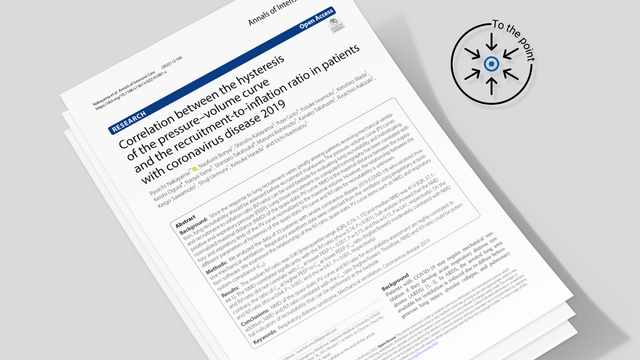
Author: Marcela Rodriguez Jimenez
Date of first publication: 06.02.2024
Last change: 04.04.2024
Removal of linked article on assessing recruitability - no new revision要点:準静的PV曲線上の正規化最大距離とリクルートメント対拡張比は、ベッドサイドで使用できる肺リクルータビリティの有望なインジケータである。

人工呼吸を受けているCOVID-19患者において、低流量の準静的プレッシャー/ボリューム(PV)曲線に基づく肺リクルータビリティ評価とリクルートメント対拡張(R/I)比の間にどのような関係があるのか?
| 選択基準 | 除外基準 |
| 18歳以上 | 18歳未満 |
| 鼻スワブのポリメラーゼ連鎖反応または定量的抗原検査によるCOVID-19の確定診断 | Datalogger 5.00による呼吸データの記録なし |
| Datalogger 5.00を使用した準静的PV曲線とR/I比の同時評価 | |
介入 | ||
| 準静的PV曲線 | R/I比(リクルートメント対拡張比) | リクルータビリティ評価 |
|
|
|
測定と主な結果 | ||
| 登録およびベースライン特性 | NMDとR/I比の相関関係 | コンプライアンスとリクルータビリティ項目の関係 |
|
|
|
リクルータビリティ評価において、準静的PV曲線のNMDとR/I比の間には強い相関関係がある。さらに、NMDとR/I比はCrs比(高レベル/低レベル)とも相関する。したがって、NMDとR/I比は、ベッドサイドで実施できるリクルータビリティのインジケータとして有望な可能性がある。
Hamilton Medicalは、P/V Toolを使用したリクルータビリティの評価、リクルートメント手技の実施、PEEPの設定について説明する教材を幅広く提供しています。記事、動画、Eラーニングモジュールなどにアクセスするには、以下のリンクをクリックしてください。